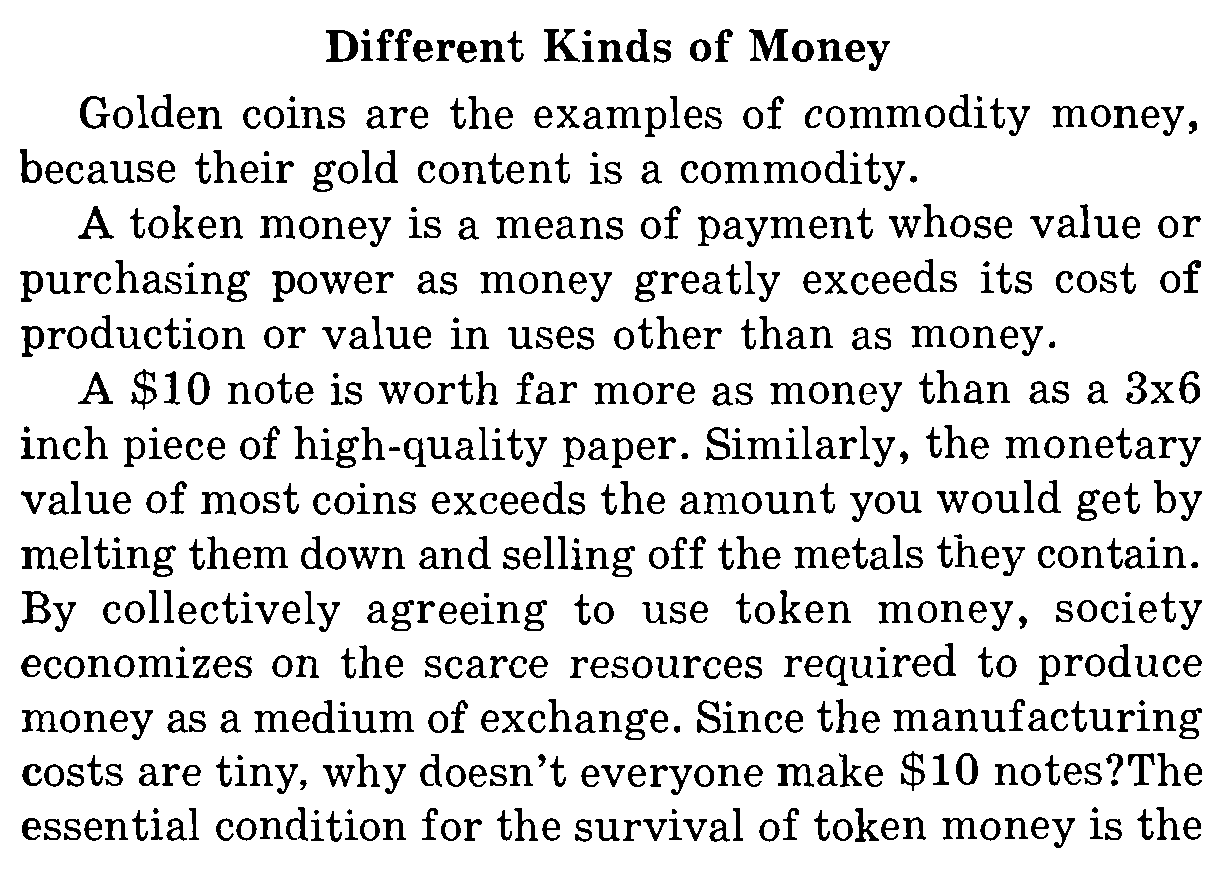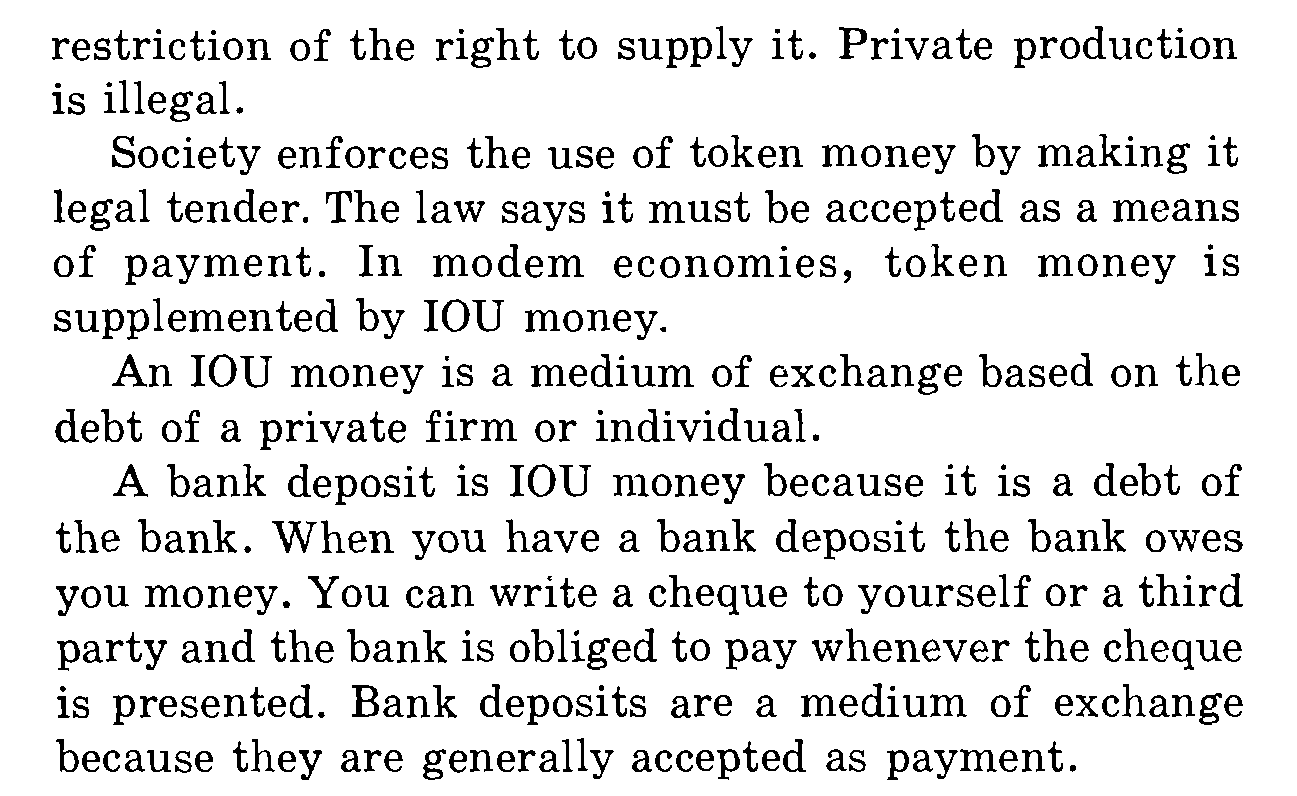
to impose |
накладати |
trade-off |
заміна |
opportunity costs |
альтернативні витрати |
to give up |
відмовлятися |
overall output |
загальний об’єм виробництва |
cause-and-effect relationship |
причинно-наслідковий зв'язок |
capital and entrepreneurship |
капітал і підприємництво |
production and consumption |
виробництво і споживання |
factors of production |
фактори виробництва |
to allocate the factors of production |
розміщувати фактори виробництва |
The basic (fundamental) economic problems
Economics deals with the problems of scarcity and choice that have faced societies and nations throughout history, but the development of modern economics began in the 17th century. Since that time economists have developed methods for studying and explaining how individuals, businesses and nations use their available economic resources. Large corporations use economists to study the ways they do business and to suggest methods for making more efficient use of their employees, equipment, factories, and other resources.
The central problem of economics is to determine the most efficient ways to allocate the factors of production and solve the problem of scarcity created by society's unlimited wants and limited resources. In doing so, every society must provide answers to the following three questions:
What goods and services are to be produced, and in what quantities are they to be produced?
How are those goods and services to be produced?
Who will receive and consume (get to use) those goods and services?
The solution of these questions depends on the economic system of each particular society.
Task #1
Answer the questions:
What's the difference between macroeconomics and microeconomics? What questions does macroeconomics examine? What questions does microeconomics examine?
What are the factors of production?
What is the fuel that drives the economy?
What are the natural resources?
What is called «the price paid for the use of labor»?
What is the capital?
What is the role of entrepreneurship in production?


What is Marketing?
Marketing is the business function that identifies customer needs and wants, determines which target markets the organization can serve best, and designs appropriate products, services, and programs to serve these markets. The goal of marketing is to create customer satisfaction profitably by building value-laden relationships with important customers. The marketing department cannot accomplish this goal by itself. It must team up closely with other departments in the company and partner with other organizations throughout its entire value-delivery system to provide superior value to customers. Thus, marketing calls upon everyone in the organization to «think customer» and to do all they can to help create and deliver superior customer value and satisfaction.
Marketing is used not only by manufacturing companies, wholesalers, and retailers but by all kinds of individuals and organizations. Lawyers, accountants, and doctors use marketing to manage demand for their services. So do hospitals, museums, and performing-arts groups. No politician can get the needed votes and no resort the needed tourists without developing and implementing marketing plans.
People at all levels of these organizations need to know how to define and segment a market and to develop need-satisfying products and services for chosen target markets. They must know how to price their offerings to make them attractive and affordable and how to choose middlemen to make their products available to customers. And they need to know how to advertise and promote products so that customers will know about and want them. Clearly, marketers need a broad range of skills in order to sense, serve, and satisfy consumer needs.
People also need to know about marketing in their roles as consumers and citizens. Because someone is always trying to sell us something, we need to recognize the methods they use. And when students enter the job market, they must conduct «marketing research» to find the best opportunities and develop the best ways to «market» themselves to prospective employers. Many students will start their careers with marketing jobs in sales forces, in retailing, in advertising, in research, or in one of a dozen other marketing areas.
What does the term marketing mean? Many people mistakenly think of marketing only as selling and promotion. And no wonder– every day, people are bombarded with television commercials, newspaper ads, direct mail, and sales calls. Therefore, many people are surprised to learn that selling is only the tip of the marketing iceberg: It is but one of several marketing functions — and often not the most important one.
Everyone knows something about «hot» products to which consumers have flocked in droves. When Polaroid designed its Spectra camera, when Coleco first sold Cabbage Patch Dolls, and when Ford introduced its Taurus model, these manufacturers were swamped with orders. They had designed the «right» products — not «me-too» products, but ones offering new benefits. The aim of marketing is to know and understand the customer so well that the product or service fits him and sells itself.
This does not mean that selling and promotion are unimportant, but rather that they are part of a larger «marketing mix» — a set of marketing tools that work together to affect the marketplace. So marketing can be defined as a social and managerial process by which individuals and groups obtain what they need and want through creating and exchanging products and value with others.
The official American Marketing Association definition of marketing is:
Marketing is the process of planning and executing the conception, pricing, promotion, and distribution of ideas, goods, and services to create exchanges that satisfy individual and organizational objectives.
Marketing is part of our society. Its influence on society is more than economic. Marketing has a cultural influence on society. As a cultural phenomenon it can help shape our wants and desires. Marketing is also important to an organization because it helps that organization create successful exchange relationships with potential buyers. For this to take place, the right products must first be produced and then correctly distributed, promoted, and priced. Note that these tasks relate to our definition of marketing.
Marketing is important to each of us because it allows us to specialize. To better appreciate this, imagine a society in which each person must hunt, cook, and make his or her own clothing, shelter, and tools. Predictably, not everyone in this society would be equally proficient at all these activities. In fact, if the best hunter concentrated on hunting, the best toolmaker on making tools, and soon, then the society could create a higher level of wealth. However, this system would only work if everyone could exchange their surpluses for the goods and services they needed. By establishing a marketing system, people are given the freedom to specialize.
II. Vocabulary notes:
to identify |
ототожнювати, з’ясовувати тотожність; ідентифікувати; визначати; з’ясовувати |
to identify (oneself) with sb./smth |
назвати себе; солідаризуватися, приєднатися |
identification |
ідентифікація, розпізнавання, з’ясовування істинності; ототожнення; пізнавання; визначення; з’ясування |
to determine |
визначати; вимірювати, обчислювати; приймати рішення, вирішувати, зважуватися, робити вибір; |
determinable |
визначений |
to define |
визначати, давати точне визначення, характеризувати, давати характеристику; |
definition |
визначення, дефініція, тлумачення; якість, чіткість, виразність, певність |
to accomplish |
виконувати, досягати, удосконалювати; завершувати, доводити до кінця |
impact |
удар, поштовх, імпульс; вплив, дія |
to implement |
виконувати, здійснювати, забезпечувати виконання, утілення в життя |
to design |
складати план (схему), проектувати, конструювати; виконувати |
benefit |
перевага, привілей, користь, вигода, прибуток, благо |
to benefit |
здобувати користь (допомогу), здобувати вигоду, давати прибуток |
to execute |
виконувати, здійснювати |
executive |
виконавчий |
to appreciate |
цінувати, гідно оцінювати; визначати вартість (ціну) |
appreciation |
оцінювання, висока оцінка, вдячність |
DEMAND
Demand is a consumer's desire and ability to buy a product or service at a particular time and place.
The law of demand describes the relationship between prices and the quantity of goods and services that would be purchased at each price. It says that all else being equal, more items will be sold at a lower price than at a higher price. More people can afford to buy an item at a lower price than at a higher price.
Let's see the law of demand from the point of ice-cream selling. At a lower price some people will substitute ice-cream for other items (such as candy bars or soft drinks), thereby increasing the demand. At a higher price some people will substitute other items for ice cream.
How many ice-creams can a man eat? One, two, more? Some people will eat more than one if the price is low enough. Sooner or later, however, we reach the point where enjoyment decreases with every bite no matter how low is the cost. What is true of ice-cream applies to most everything. After a certain point is reached, the satisfaction from a good or service will begin to diminish. Economists describe this effect as diminishing marginal utility. Thus, «diminishing marginal utility» is the economist's way of describing the point reached when the last item consumed will be less satisfying than the one before. Diminishing marginal utility helps to explain why lower prices are needed to increase the quantity demanded.
SUPPLY
To the economist, supply refers to the number of items that sellers will offer for sale at different prices at a particular time and place.
The law of supply states that sellers will offer more of a product at a higher price and less at a lower price.
Why does the quantity of a product supplied change if its price rises or falls? The answer is that producers supply things to make a profit. The higher the price, the greater the incentive to produce and sell the product.
When supply changes, the entire supply curve shifts either to the right or to the left. This is simply another way of saying that sellers will be offering either more (if supply has increased) or less (if supply has decreased) of an item at every possible price. Any or all of the following changes are likely to affect the quantities supplied:
— Changes in the cost of production. If it costs sellers less to produce their products, they will be able to offer more of them for sale. An increase in production costs will have the opposite effect — supply will decrease.
— Other profit opportunities. Most producers can make more than one product. If the price of a product they have not been producing increases, many will shift their output to that product.
— Future expectations. If producers expect prices to increase in the future, they may increase their production now to be in position to profit later. Similarly, if prices are expected to decline in the future, producers may reduce production, and supply will fall.
